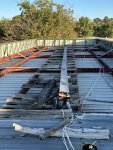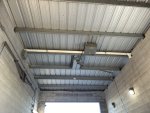The roof trough that holds the hoses for the bays needs to be replaced. The original trough was made from galvanized sheet metal....the type that's used for ductwork in houses. After 25 years, it's finally rusted past the point of repair.
Any suggestions what to use to make a new trough?
Any suggestions what to use to make a new trough?










